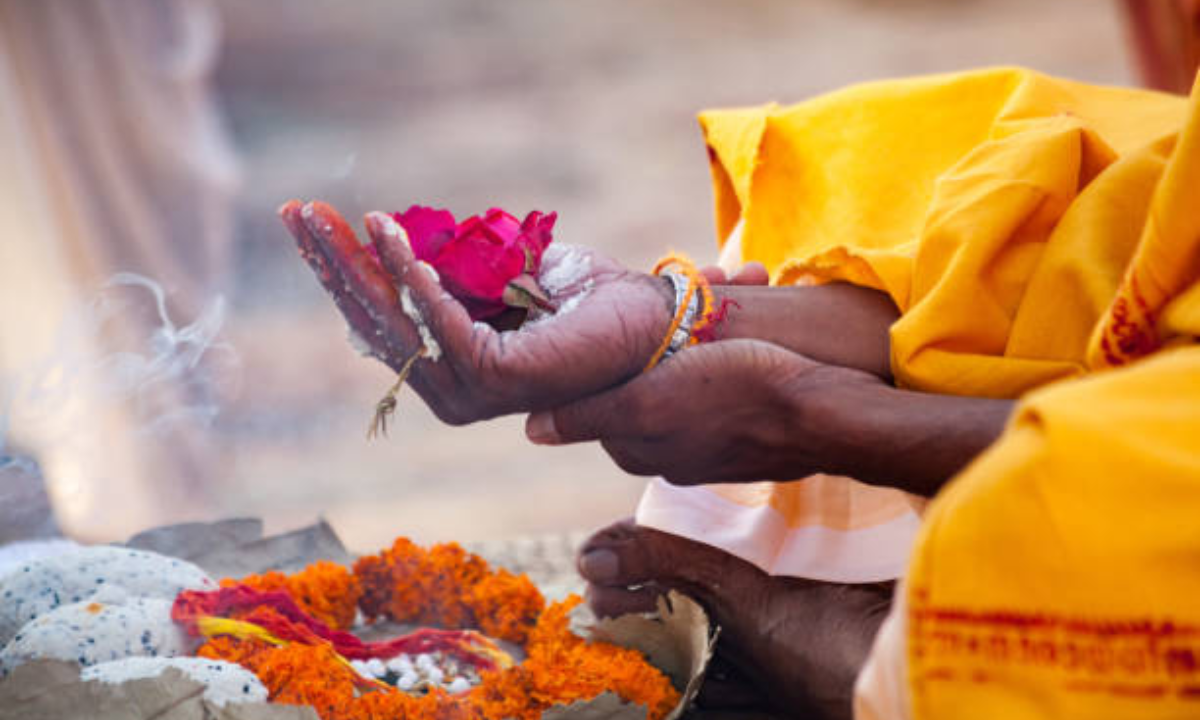The ancient Hindu religion appears to have profound religious beginnings that welcome multiple customs and sacred practices. Hindu philosophy teaches an endless movement of spirits between lives where souls continuously cycle between different states of being known as reincarnation.
The Hindu religion features particular death rites which assist the spiritual journey of souls after they depart from physical human form. After-death rituals in Hindu religion enable both mournful families and transcending souls to receive peace of mind while helping them reach spiritual elevations.
Understanding Death in Hinduism

Death functions as a sacred valuable moment in Hindu teachings because it causes life energy to transition to another state. According to Hindu beliefs, the essential teachings include karma and duty through dharma and liberation through moksha. Any spirit aims for moksha which signifies liberation from repeated births followed by deaths.
Through the religious rituals which follow death Hindus aim to assist the departed soul on its journey toward achieving this eternal state of liberation. The main aspect of these rituals stays the same while each tradition preserves its version of death practices.
The citizens who occupy Bangalore’s religiously diverse areas face difficulties in finding suitable religious authorities during their traditional funeral proceedings. The funeral services operating in Bangalore provide services that help families conduct sacred ceremonies in an organised manner. Religious funeral service organisations enable people to practice traditional customs during their transition within the modern urban environment.
Key After-Death Rituals in Hindu Religion
1. Funeral preparation happens before the deceased individual crosses into eternity
People who have died receive their bodies washed down and made holy through purification by those who are close family members. Physical purification through bathing has deep symbolic value within traditional beliefs for sanctifying spiritual progress after death. In some cases, turmeric or sandalwood paste is applied to the body. The body of the departed receives new fresh garments which frequently include white attire since it stands as a Hindu symbol representing purity.
2. The Final Journey to the Cremation Ground
Hinduism considers cremation to be the central practice of its religious death rituals. The funeral fire signifies the natural return of bodies to earthbound elements including earth and water as well as air, fire, and space. The body is placed on a bamboo stretcher and taken to the cremation ground.
The journey to the cremation ground is solemn, and traditional chants like “Ram Naam Satya Hai” (the name of Lord Rama is eternal) are uttered by the mourners. In cities such as Bangalore, funeral services in Bangalore often help organise transportation, ensuring that the body is respectfully carried to the sacred site.
3. Cremation (Antyesti)
The cremation ceremony, called “Antyesti” in Hinduism, is one of the most critical after-death rituals in Hindu religion. The eldest son or a close male relative of the deceased usually performs the rites. The body is placed on a funeral pyre, and the son lights the fire after a ritualistic prayer. The idea is to liberate the soul by burning the physical body.
Recitations from holy texts like the Bhagavad Gita are performed by priests to guide the soul toward liberation. Families residing in urban environments, where cremation spaces might have modern facilities like electric crematoriums, often rely on funeral services in Bangalore to manage these steps while maintaining tradition and respect.
4. Collection of Ashes and Bone Remains
Following the cremation the surviving relatives collect the remains of ashes and bone fragments after waiting one to two days. A religious process requires the gathering of “asthi” remains which are then placed into holy water bodies consisting of rivers or waters that are considered sacred for immersion.
People consider the Ganga to be the most sacred location for ash immersion yet Bangalore residents conduct this ritual by placing ashes into nearby holy rivers and authorised water reservoirs. The performance of funeral services in Bangalore usually helps families execute ash immersions at rivers because urban residents need assistance reaching water bodies.
5. Pind Daan (Food Offerings to the Ancestors)
The custom of giving round balls from rice to barley and wheat flour named “Pind Daan” represents offerings to deceased spirits. Feeding the ancestor’s soul through these offerings serves as a way to help it achieve peace. The customary rite extends throughout 10–13 days according to family traditions after the cremation process. The mourning duration extends through this particular timeframe.
After cremation specific ceremonies are performed on the 10th day (Dasam), 12th day (Dwadash), and 13th day (Tehravin) before relatives organise a memorial meal to remember the deceased with their family and friends, the funeral services in Bangalore arrange both priests and necessary Pind Daan ritual assets for their clients.
6. Shraddha (Paying Respect to Ancestors)
According to Hindu practice, Hindu families need to carry out the annual Shraddha ceremony to express their respect for their deceased ancestors. It includes offerings of food, prayers, and donations to the less fortunate. It is believed that these acts of kindness ensure the soul’s ascension in its spiritual journey. Shraddha is usually performed on the death anniversary of the departed, and it continues annually as a mark of respect and remembrance.
This spiritual rite has spiritual value for all Hindus. In Bangalore, funeral services maintain family records so that important death anniversary celebrations can be properly scheduled regardless of city intensity.
Significance of Rituals in Modern Times
Modern changes in life patterns combined with urban lifestyles have resulted in transformations of Hindu religious ceremonies following death. The fundamental rituals stay unchanged but modern crematoriums together with funeral services now serve the growing needs for efficient services in highly populated cities including Bangalore.
Those who reside in metropolitan areas find professional funeral services in Bangalore to be a welcome advantage because they simplify processing funeral activities despite traffic difficulties and time limitations.
These services conduct traditional funeral practices simultaneously with cultural obedience to contemporary urban requirements. These services combine transportation setup with priest arrangements to guide rituals so the departed person can receive dignified and peaceful ceremonies.
Conclusion
In Hindu rituals death ceremonies perform a vital religious purpose to guide the living departed toward both spiritual enlightenment and journey to the afterlife. Family members find peace during death ceremonies when they witness their departed ones move toward both spiritual liberation and universal harmony.
Expert funeral services in Bangalore deliver essential backing to families by fulfilling all needs under the municipal traditions of the metropolitan city. These services restore continuity between Hindu sacred customs from the past together with present-day urban demands so families can honour their rites with integrity.
Family members who respect funeral rituals create both positive spiritual outcomes for themselves and peaceful future generations through their final gestures of respect to death.
Kaashimukthi operates as a respected provider helping families conduct traditional cremation rites alongside post-cremation services in Bangalore which help adherents uphold Hindu customs smoothly and with dignity.

Madhu is an Entrepreneur, a Mentor, a Writer and an Aspiring Car Race Driver. He is Deeply passionate about leveraging Technology and Human Centred Design to make complex care and End of Life Planning easier. With the ultimate aim of Improving the quality of Life in the Twilight years. Madhu is highly educated and Alumni of IIM-Bangalore, Sikkim Manipal University and Bangalore University besides a Rich Industry Experience in the field of Product Management, Design, Supply chain, Finance, Commercial Management and Funeral Services.

